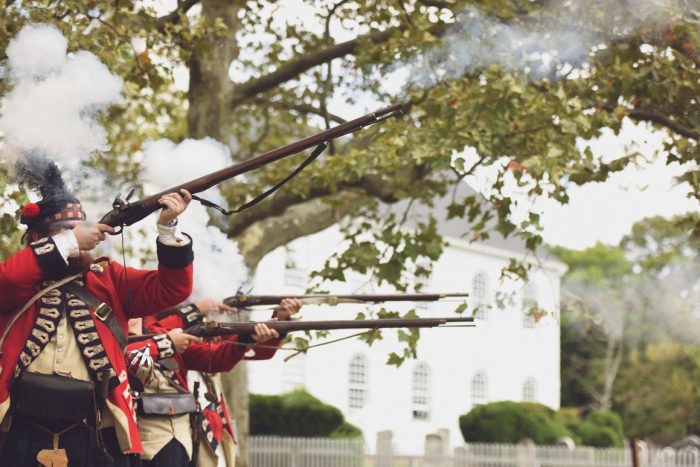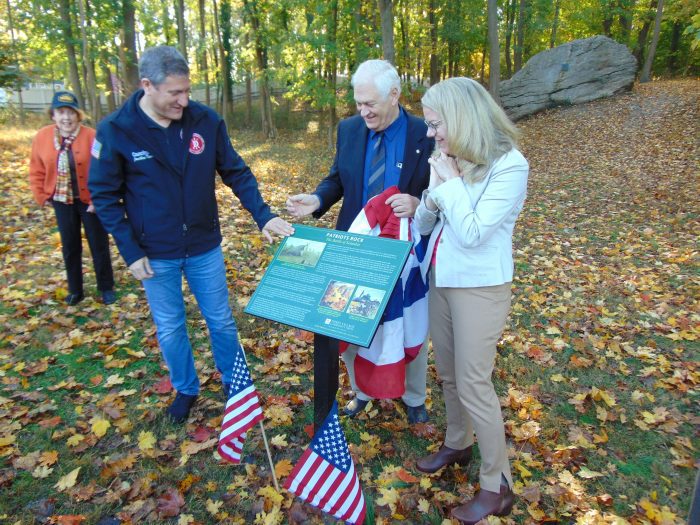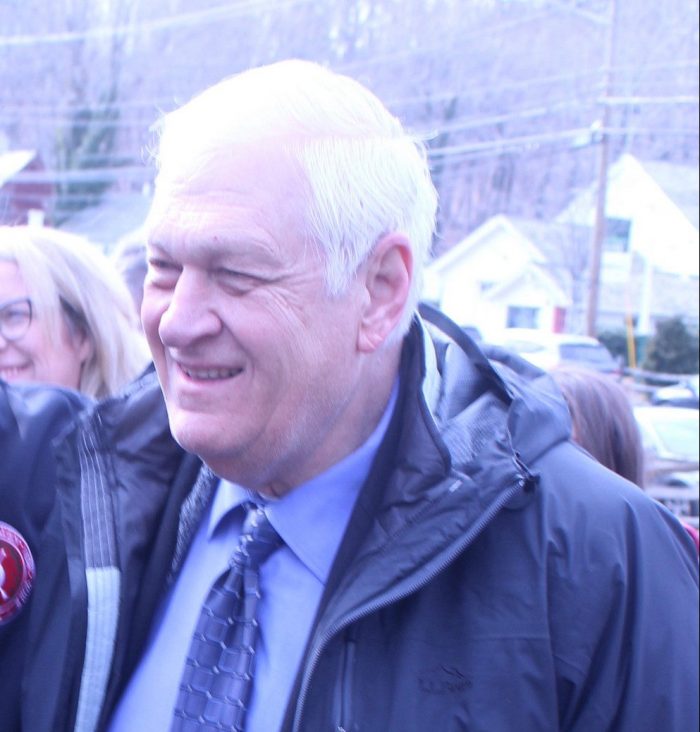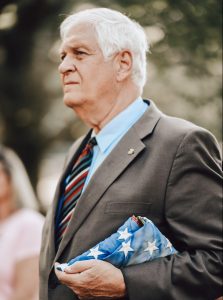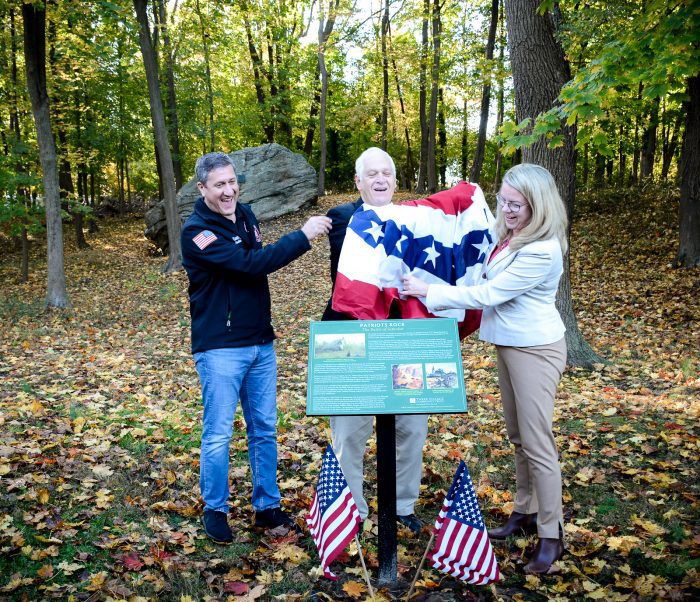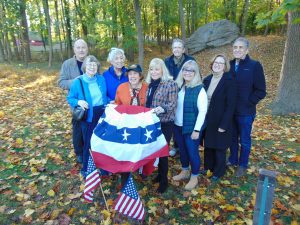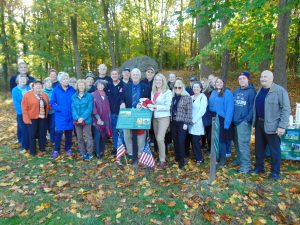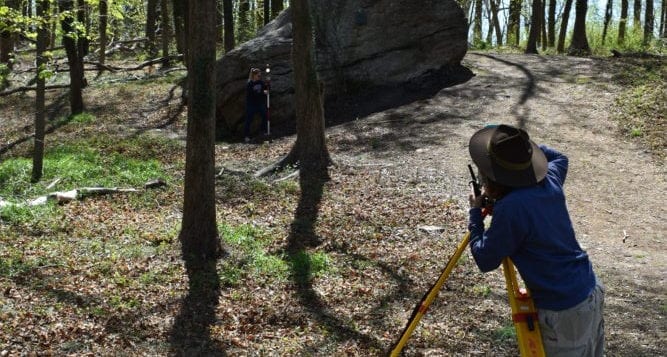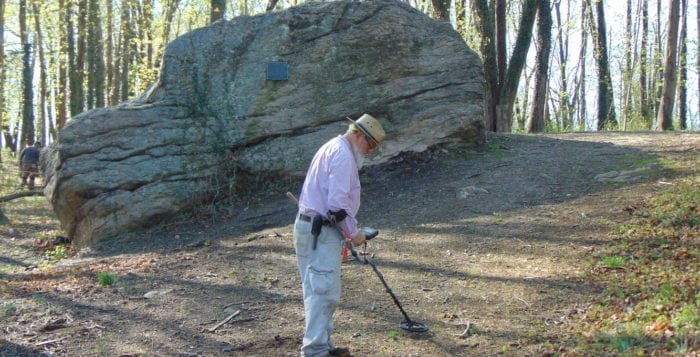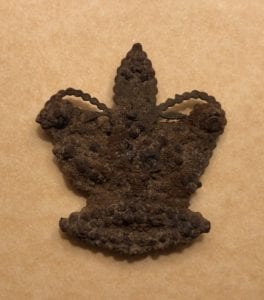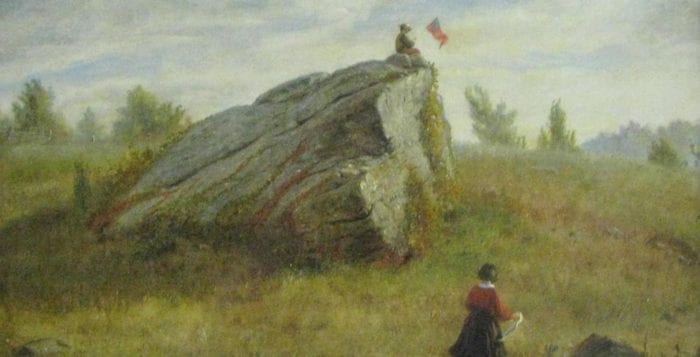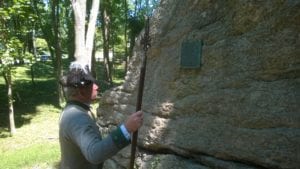By Heidi Sutton
Mark your calendars! Culper Spy Day returns on Saturday, Sept. 9 from 10 a.m. to 4 p.m. (rain date is Sept. 10). Presented by the Three Village Historical Society (TVHS) and Tri-Spy Tours in collaboration with more than 30 local historical and cultural organizations, the day will feature activities related to the Culper Spy Ring which was founded by Benjamin Tallmadge, George Washington’s chief intelligence officer during the Revolutionary War.
Now in its 9th year, the annual event is the brainchild of Margo Arceri, who first heard about Washington’s Setauket spies (including her favorite spy Anna Smith Strong) from her Strong’s Neck neighbor and local historian, Kate W. Strong, in the early 1970s.
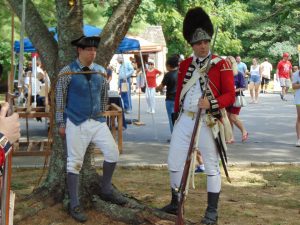 “My love of history grew from there,” said Arceri who today runs Tri-Spy Tours offering walking, bike and kayak tours of the Setauket area. “Everywhere you turn in the Three Villages you are looking at an artifact, and as the historical society believes, the community is our museum and I would really love to put that on the forefront of people’s minds. History is constantly evolving and new information is being discovered everyday. We don’t know what is waiting to be unearthed next and that fills me with excitement.”
“My love of history grew from there,” said Arceri who today runs Tri-Spy Tours offering walking, bike and kayak tours of the Setauket area. “Everywhere you turn in the Three Villages you are looking at an artifact, and as the historical society believes, the community is our museum and I would really love to put that on the forefront of people’s minds. History is constantly evolving and new information is being discovered everyday. We don’t know what is waiting to be unearthed next and that fills me with excitement.”
Participants will have the opportunity to visit 9 locations in Setauket, Stony Brook and Port Jefferson (see list below) to learn about Long Island’s brave Patriot spy ring. Admission to all locations, with the exception of the Sherwood-Jayne House tour and the Spies! exhibit tour at the TVHS, is free.
“Guests at Culper Spy Day can expect to learn about American Revolutionary history in their own backyard. The hometown heroes who risked their lives and turned the tide of the war lived here on Long Island, working with George Washington right under the noses of their British neighbors. Through re-enactors, storytellers, demonstrations, and self-guided and docent-led tours, visitors at Culper Spy Day will enjoy information and inspiration at all of our historic sites,” said Mari Irizarry, Director at the TVHS.
According to Irizarry, several new exciting events have been added to the roster this year. “We’re proud to host George Washington, Martha Washington and their Squire in his field tent / oval office on the grounds of the historical society; we have partnered with Preservation Long Island to create a deluxe scavenger hunt across all sites for excited clue seekers to learn along the way; and Drowned Meadow Cottage Museum will present their new exhibit, Privateers: Pirates with Permission with guided tours, privateers re-enacting the plundering of the Roe family and colonial-themed storytelling for children.”
Colonial cooking demonstrations by Diane Schwindt from the Ketcham Inn will feature an authentic recipe from Mary Floyd Tallmadge, who was the wife of Benjamin Tallmadge and daughter to William Floyd, signer of the Declaration of Independence. Visitors may sample the food and take home the recipe.
In addition, The Long Island Museum will have the recently discovered Culper Spy letter on display throughout the day. “The handwritten letter dated November 8, 1779 from Benjamin Tallmadge (using his alias, John Bolton) to Robert Townsend (alias, Samuel Culper Jr.) is the only known surviving letter between the two,” said Arceri.
The event also marks the launch of the Three Village Historical Society’s brand new 1776 Augmented Reality app through the generous donation of the Robert David Lion Gardiner Foundation.
If you don’t have time to visit all the locations, Arceri recommends visiting the Sherwood Jayne Farm and the Drowned Meadow Cottage as they are not open to the public very frequently “so it is a treat to step back in time and visit these sites” as well as the Caroline Church of Brookhaven and the Setauket Presbyterian Church and their historical cemeteries.
Arceri is looking forward to welcoming new visitors to Culper Spy Day. “Last year was such a huge success — we had over 1100 people visit ‘Culper Country’ and we expect to have those numbers grow as more and more of the mainstream are getting Culper fever,” she said. “Setauket has really become a tourist destination and Culper Spy Day is certainly a highlight for these visitors as they are able to see many of the sites and visit with many of the organizations that make up our Revolutionary story.”
Irizarry agrees and is committed to continuing this event for years to come.
“At the Three Village Historical Society, our mission is to preserve our shared history. The Culper Spy Ring is an essential part of how we won the Revolutionary War and became a country — that’s a history we can ALL share! Culper Spy Day is a celebration like no other, and we love seeing history come to life year after year. As more sites and organizations get involved, this incredible event gets better and better.”
The 9th annual Culper Spy Day is made possible by the generous support of Heritage Spy Ring Golf Club. For more information, call 631-751-3730 or visit www.culperspyday.com
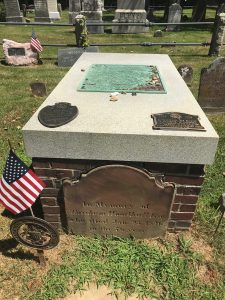
PARTICIPATING LOCATIONS:
1. THREE VILLAGE HISTORICAL SOCIETY, 93 North Country Road, Setauket. Located in the circa 1800 Bayles-Swezey House. Here you can take part in outdoor events from 10 a.m. to 4 p.m. including “building” a timber frame house with Abraham Woodhull; children’s story hour; colonial crafts; an invisible ink demonstration;; Culper Spy-themed authors and book signings; Anna Smith Strong’s famed clothesline, a colonial cooking demonstration; 23rd Regiment of Foot (Royal Welch Fusiliers in America) and Huntington Militia encampment; and much more. Docent led tours of the Spies! exhibit will be held every 30 minutes at $10 per person. Food trucks will be on site. 631-751-3730.
2. SETAUKET NEIGHBORHOOD HOUSE, 95 Main St., Setauket. The original part of the house, where the central chimney is located, was built in the early 1700s. In 1820 it was moved to its present location from its original site on Setauket (Conscience) Bay by Dr. John Elderkin. The building has served as an inn, and has housed a general store, post office, bank and a Franklin Library. Docents will give tours of the historic home from 10 a.m. to 4 p.m. 631-751-6208.
3. PATRIOTS ROCK HISTORIC SITE, Main Street, Setauket (across from the Setauket Post Office). This glacial erratic boulder is said to be the location of the Battle of Setauket on Aug. 22, 1777. Stop here between 10 a.m. and 2 p.m. to meet representatives from the Three Village Community Trust who will discuss the importance of Patriots Rock and its local and environmental history. 631-689-0225.
4. CAROLINE CHURCH AND CEMETERY, 1 Dyke Road, Setauket. Built in 1729, this timber frame building has maintained its Colonial appearance. Now an Episcopal church, during the Revolutionary War the Caroline Church was Anglican and a Colonial extension of the Church of England. The graveyard contains the remains of six Patriot soldiers as well as soldiers from World War I and II. The inside of the church will be open for guided tours from noon to 4 p.m. and tour the cemetery your leisure with a docent present for questions. 631-941-4245.
5. SETAUKET PRESBYTERIAN CHURCH AND CEMETERY, 5 Caroline Ave., Setauket. The previous church (1714–1811) was a part of British fortifications during 1777. The fort was under the command of Loyalist commander Col. Richard Hewlett. The present building dates from 1812. Come tour the interior of the church from 11 a.m. and 2 p.m. and then tour the cemetery with the grave of Abraham Woodhull of Washington’s spy ring at your leisure. 631-941-4271
6. EMMA S. CLARK MEMORIAL LIBRARY, 120 Main St., Setauket. The library (circa 1892) will display Revolutionary War soldiers’ equipment in the lobby, enjoy live music from 11 a.m. to 1 p.m. and kids can enjoy an outdoor craft from noon to 3 p.m. 631-941-4080
7. SHERWOOD-JAYNE HOUSE, 55 Old Post Road, East Setauket. Originally built around 1730 as a lean-to saltbox dwelling, the house and farm were maintained as an operational farmstead for over 150 years by members of the Jayne family. Visit with Big Bill the Tory aka William Jayne III, who will explain the noble intentions and virtuosities of King George III and tells you the TRUTH about Washington’s pesky band of renegade spies! Tours run continuously from 10:30 a.m. to 3 p.m. $5 per person. 631-692-4664
8. THE LONG ISLAND MUSEUM, 1200 Route 25A, Stony Brook. The museum is a Smithsonian Affiliate with permanent and changing exhibitions on American history and art, along with the finest collection of horse-drawn carriages in the country, some of which belonged to Revolutionary War heroes. Visit the History Museum between noon and 5 p.m. to view the newly uncovered Culper Spy Ring letter by Benjamin Tallmadge to Robert Townsend. Tour the museum’s galleries and grounds for free. 631-751-0066
9. DROWNED MEADOW COTTAGE MUSEUM, corner of West Broadway and Barnum Avenue, Port Jefferson. The Revolutionary War-era Roe House was originally constructed circa 1755 and Phillips Roe, a member of the Culper Spy Ring along with his brother Nathaniel and cousin Austin, was known to have lived there. Visit the Revolutionary War-era Roe House between 11 a.m. and 4 p.m. with a new exhibit, Privateers: Pirates with Permission, tours, privateers re-enacting the plundering of the Roe family and colonial-themed storytelling for children. 631-473-4724
* Please note: Public restrooms are located in the Setauket Neighborhood House and Emma S. Clark Memorial Library.

